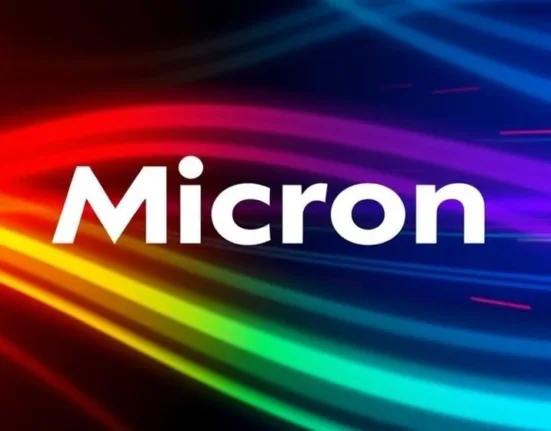Electronics
Molecular Qubits Achieve Telecom Compatibility, Paving the Way for Scalable Quantum Networks
- by Priyadarshan
- 3 October 2025
- 3 minutes read

Researchers from the University of Chicago, UC Berkeley, Argonne National Laboratory, and Lawrence Berkeley National Laboratory have announced a breakthrough that could reshape the future of quantum technology. The team has developed molecular qubits that operate at telecom frequencies, allowing them to communicate directly over today’s fiber-optic infrastructure. This achievement, detailed in the journal Science, marks a significant step toward a practical, scalable quantum internet.
Quantum Leap: Why Telecom-Compatible Qubits Matter
Quantum networks—often called the “quantum internet”—promise ultra-secure communication, the ability to connect quantum computers across continents, and the distribution of quantum sensors with unmatched precision. Until now, one major hurdle was compatibility: most quantum devices operate at frequencies mismatched with our existing fiber-optic networks. That meant extra, often lossy, conversions and limited real-world deployment.This new class of molecular qubits, based on the rare-earth element erbium, sidesteps that obstacle. They naturally operate at the same frequencies used in global telecommunications, meaning they can plug directly into the backbone of the internet. According to principal investigator David Awschalom, Liew Family Professor of Molecular Engineering and Physics at the University of Chicago,“By demonstrating the versatility of these erbium molecular qubits, we’re taking another step toward scalable quantum networks that can plug directly into today’s optical infrastructure.”Read Also:Quantum Metrology Breakthrough: Universal Zero-Measure States Set New Standard for Spin Detection
The Science Behind the Breakthrough
To create these telecom-ready qubits, the team leveraged the unique properties of erbium. Known for its clean absorption and emission of light, erbium has long been used in classical telecommunications. Its magnetic properties also make it a strong candidate for quantum applications. By integrating erbium into specially engineered molecules, researchers achieved a system that bridges the gap between light and magnetism—a fundamental requirement for quantum networking.Using a blend of optical spectroscopy and microwave techniques, the researchers demonstrated that their qubits interact at frequencies compatible with silicon photonics. This ensures seamless integration with established technologies in telecommunications, high-performance computing, and advanced sensors. The qubits’ molecular design offers further advantages: their small size and chemical flexibility could enable quantum sensors that operate in biological or otherwise challenging environments.Read Also: Canadian Physicists Achieve First Electrically-Controlled Silicon Quantum Device, Paving Way for Scalable Quantum ComputingCollaboration and Chemistry: A Multidisciplinary Effort
The project’s success hinged on close collaboration between physicists and chemists. Weiss and Smith, co-authors on the study, emphasized the critical role played by UC Berkeley’s chemistry department, particularly the contributions of Ryan Murphy in Jeffrey Long’s group.Murphy noted,“Synthetic molecular chemistry provides an opportunity for optimizing the electronic and optical properties of rare earth ions in ways that can be difficult to access in conventional solid-state substrates. This study is just scratching the surface of what we think we can accomplish.”The interdisciplinary approach allowed the team to tailor the qubits’ properties at the molecular level, which is key to unlocking new applications in quantum networking, sensing, and computing.
What’s Next for Quantum Technology?
This advance could rapidly accelerate the rollout of practical quantum networks. With qubits that operate natively at telecom frequencies, the need for complex frequency conversion is eliminated. Integration with existing fiber-optic networks becomes straightforward, lowering costs and technical barriers. The potential applications are vast:- Ultra-secure communications for governments and businesses
- Interconnecting quantum computers across long distances
- Deploying quantum sensors in healthcare, environmental monitoring, and beyond
Looking Forward
The development of telecom-compatible molecular qubits is more than a technical achievement; it’s a foundational shift. As the researchers continue to explore the capabilities of these atomically engineered systems, the prospect of a robust, secure, and scalable quantum network moves from theoretical possibility to practical reality. The future of quantum networking—and perhaps the internet itself—just got a little closer.Discover more from WireUnwired Research
Subscribe to get the latest posts sent to your email.
Priyadarshan
Senior Writer
I’m Priyadarshan, a graduate in Electrical Engineering from NIT Jamshedpur, with a deep interest in power systems, renewable energy, and quantum computing. My background in engineering, coupled with hands-on exposure to power infrastructure and substation projects, has shaped my perspective on how technology can transform industries and everyday life.Through this blog, I aim to make complex ideas — from electrical engineering fundamentals to emerging frontiers like AI and quantum computing — clear, engaging, and accessible. My focus is on connecting theory with practical applications, while exploring innovations that are redefining the future of energy, technology, and society.








